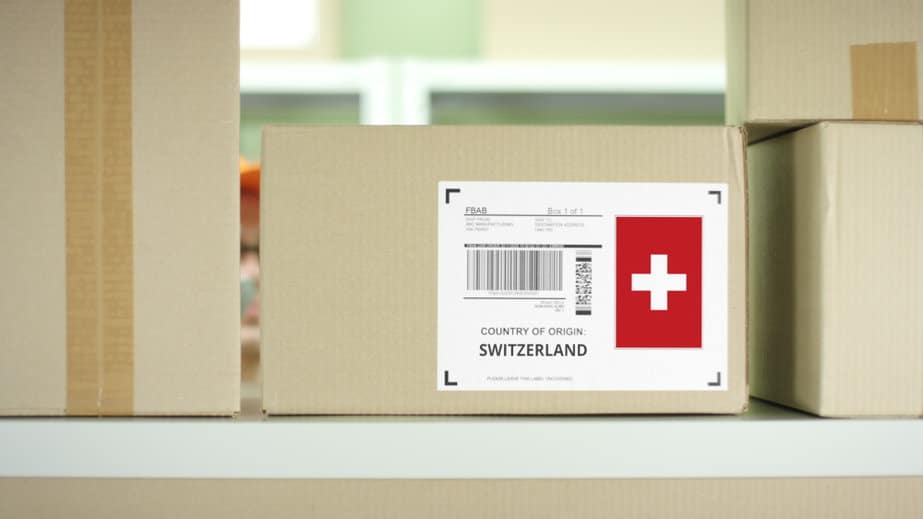
Writing a postal address can be very simple in all those cases where the recipient is located in the same country of the sender, or, in a country where the postal system follows an identical or similar format. Shipping from one state to another in the US, for example, is not that difficult for a US citizen, nor is it difficult if the shipment is destined to a Canadian address which uses a very similar format. Even within the European Union the addresses of most countries respect the same format. However, if we move to the East or other areas of the world, we will have to understand precisely how to write the address for that country, in order to avoid making mistakes that could slow down or even prohibit the delivery. This is true for individuals and, most importantly, for companies or e-commerces that find themselves, more and more often, having to handle international or even intercontinental shipments.
In business and commercial scenarios, writing a postal address according to the guidelines established by the postal system of the target country means being more competitive and results in quicker delliveris, having full control over orders, returns and shipments in general. Writing addresses correctly becomes a competitive advantage of enormous importance, which will continue to increase in the months and years to come as globalized business increases. How do you achieve the ambitious goal of writing the postal addresses of any country correctly? Before going into the merits of the possible solutions, let’s take a look, through a series of plausible examples, at some formats of postal addresses from countries in various areas of the world, in order to understand what differences exist from one country to another.
Try our online software to write addresses correctly
FROM JAPAN TO RUSSIA: EXAMPLES OF POSTAL ADDRESSES
Japan
The Japanese postal system appears very complex to a Westerner. This is for several reasons, starting with the lack of street names. Odonomy simply does not exist throughout Japan: with some rare exceptions (like Kyōto and a few cities in the Hokkaidō region), squares and streets don’t have a name. The postal code, on the other hand, was recently integrated, starting from 1998, and is composed of a 3-digit number followed by a dash and then another 4 digits (all preceded by the symbol 〒). To write a Japanese address, we proceed from the most generic to the most specific subdivision, that is from the prefecture (there are 47 in total), to the city, followed by the district, town or village, etc.
In the Rōmaji version, or in the Latinized form, the address looks like this:
3-13-3 3F Seiwa Ikebukuro building, Higashi-Ikebukuro, Toshima-ku, Tokyo-to 170-0013
Whilst in Kanji, the Japanese version of the same postal address is written as follows:
〒170-0013 東京 都 豊 島 区 東 池袋 3-13-3 星 和 池袋 ビ ル 3 階
Switzerland & EU
In Switzerland, the postal system is quite faithful to the principles and logic of the postal systems of most European countries. In fact, Italy, Spain, France, Germany and many others follow an almost identical approach, which involves writing the address starting from the recipient’s name (intended as first and last name or name of the company), then, the address continues by stating the street name and house number, postcode and town / city. The peculiarity is given, in the case of Switzerland and the EU countries, by the NPA, acronym which stands for Postal Code, Italian equivalent of the CAP code, Codice di Avviamento Postale or the French CP, Code Postal, or the German PLZ, Postleitzahlen, and so on …
Below we see an example of a postal address formatted as required by the standards used in Switzeralnd, Italy, France, Germany, Austria and other EU countries.
Rossi SA
Mr. M. Bianchi
Corso San Gottardo 2
6501 Bellinzona
Russia
In the Russian Federation there are some details that differ from the formats seen previously. In the first instance there is the possibility of writing the address using the Cyrillic alphabet instead of Latin (transliteration that our software is able to perform automatically). The order of data entry also changes: in Russia you start with the postal code, a number that indicates the area and region, then the country, city, street, building number and apartment number (an extra detail that in many countries isn’t even known or mentioned). Finally, the last detail of the address is the name and surname of the recipient. The result is something that resembles European and American addresses, but which is not quite directly comparable to the mas it’w written backwards.
The example below has been formatted according to the postal standard that is used within the Russian Federation (to simplify we have used the Latinised version):
123456, Russia, Moscow
via Tverskaya, bld 16
Nikolaeva Marina
BEYOND THE FORMAT: THE NORMALIZATION OF AN ADDRESS

Writing a mailing address in a suitable way requires, as we have seen, some familiarity with foreign shipping formats. But be careful, because knowledge of the format is not the only requirement to consider. In addition to the format, we must keep in mind the qualitative aspect of the information available to us. This is because a typing error, missing data or an obsolete code can result, in the practice of a business, in a failed or delayed delivery, with all the negative consequences that would ensue (higher costs, deterioration of the goods, loss of time, negative reviews and feedback). The normalization of an address, understood as control, remediation, updating and possible translation / transliteration of the output into other languages, is a best practice that every modern company should implement in any shipment, both near and far.
To do this, it is necessary to use specific software for the normalization of an addresses such as computer programs, including their online (cloud) versions, have been developed to implement data quality assurance and speed up shipping operations. A software of this kind allows you to transform an approximate and badly formatted input into a complete, up-to-date address that respects the standards of the destination postal system. In the specific case of our online software Address4, the single address or the address file (batch mode) is processed on several levels in extremely short times for:
- correction of information, whereby the address is reported in its correct form (number, location, etc.)
- obsolete data update, where one data has been replaced by another, the most recent is inserted
- auto-complete, a step that involves adding missing values by using input from the user
- translation / transliteration, if the address is entered in a language or alphabet different from the language of the destination
- address formatting, returning everything in the standard reference format based on the postal system of the country the data is from
ADDRESS4: A FREE DEMO FOR ADDRESSES THAT ARE ALWAYS CORRECT
Nowadays, the manual check of addresses has been replaced by the use of more efficient IT systems, which facilitate the management of this business area in countries all over the world. Address4 is the software that responds to this need thanks to an articulated suite, with numerous latest generation tools. From simple normalization to territorial code search, from auto-complete to address formatting, with Address4 you can have everything at your fingertips without the need for additional manual checks or reviewers. Our trial is at your disposal with 100 free credits, ready to use and without obligation. By registering you will also receive a free ebook on data quality. To access the software and create your profile, all you need to do is create an account by inputting your data only (no credit card is required). Try now: in less than a minute you can start testing our software, with the certainty of writing down your next addresses correctly and without having to worry about formatting or incorrect data.
Create your account now: fill out the form on the dedicated page!




